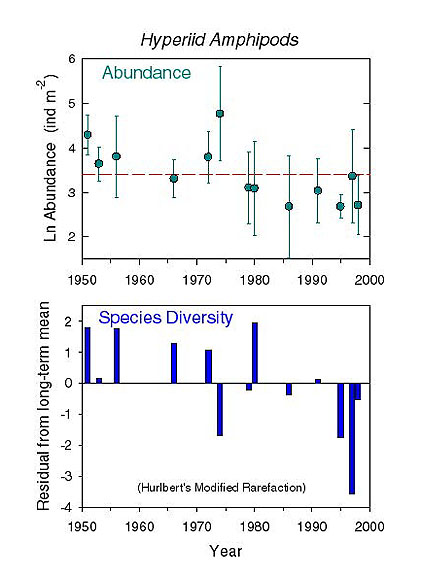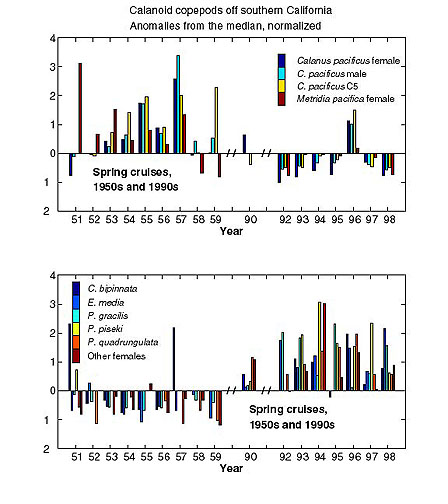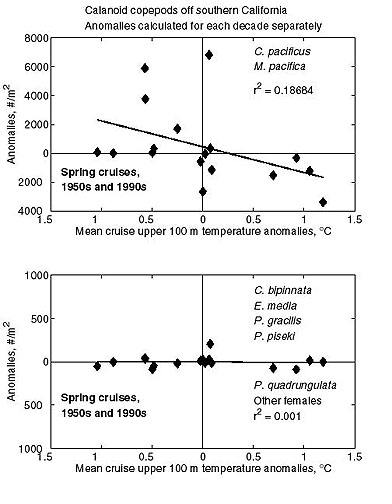Progress Report: April 1999
Project Title: Long-term changes in California Current zooplankton assemblages: a
retrospective analysis
Investigators: Mark Ohman (PI), David Checkley (PI), Bertha Lavaniegos (Post-doc),
Ginger Rebstock (Graduate Student),
Calanoid Copepods (Ginger Rebstock's Ph.D. research)

Fig. 1. Illustrates that one group of copepods
(Calanus pacificus and Metridia pacifica) decreased in abundance in most
years in the 1990's in comparison with the 1950's, while another group
increased during the same time period. (Anomalies from the mean of the
1950's and 1990's.)

Fig. 2. Illustrates that the first group of
copepods shows a negative relationship with temperature (averaged over the
upper 100 m, as residuals from the within-decade mean), while the other
group shows no relationship with temperature anomalies.
Hyperiid amphipods (Bertha Lavaniegos [post-doc] and Mark Ohman)

Fig. 3. Upper panel illustrates that hyperiid
abundances in the 1950's - early 1970's were twice hyperiid abundances
from late 1970's to 1998. Lower panel illustrates that hyperiid
species diversity was relatively high in the 1950's to early 1970's,
and low in most of the 1980's and 1990's. [62 hyperiid species
identified to date.] Some of the gelatinous hosts of the hyperiids,
particularly doliolids, appear to have declined over the same time
period.
With further analyses we expect to pin down whether the changes in
zooplankton abundance and species diversity are associated with Regime
Shifts or other low frequency physical changes in the CCS. We also
expect to fully resolve the El Nino signals. The results to date
illustrate that there has not been a unidirectional decline of all
zooplankton in the CCS over the past 5 decades, but rather
differential shifts among species: some taxa have increased, others
decreased, others are essentially unchanged. The structure of the
assemblages, and patterns of diversity, are not constant on decadal
time scales and appear to respond to the large climate signals in the
water column.


